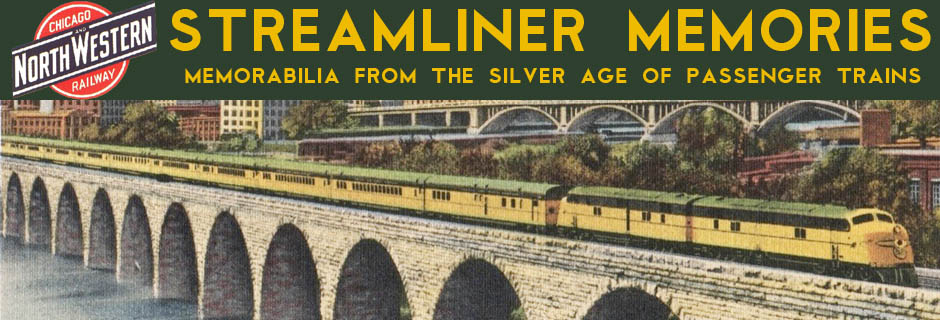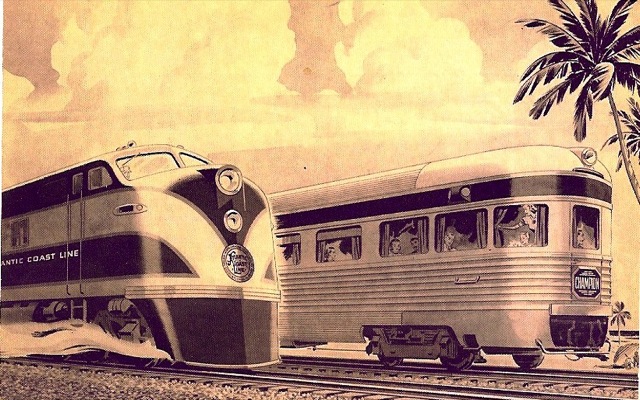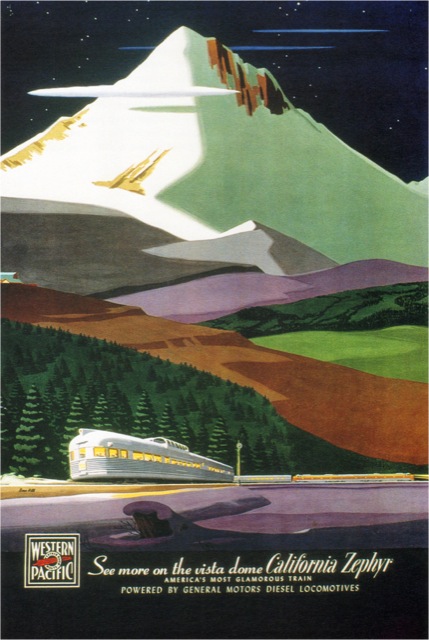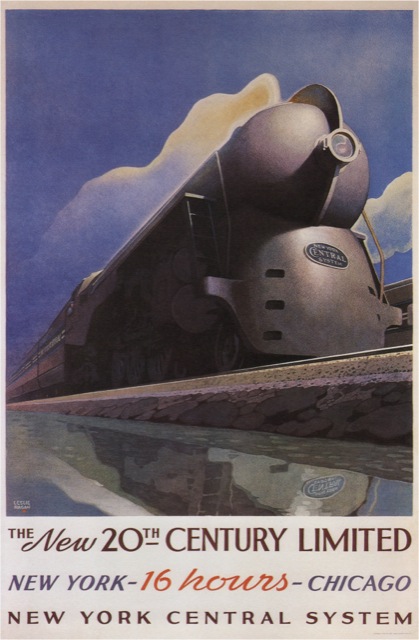In lieu of canceling train service (which generally required either federal or state approval), various ways that railroads attempted to save money in the face of declining ridership included:
1. Simplifying exterior paint schemes;
2. Simplifying dining car menus;
3. Reducing the number of cars on a train, such as by eliminating the observation car.
Is a streamliner still a streamliner if it lacks a round-tailed observation car? The wind tunnel tests that first inspired streamlining showed that the shape of the rear was just as important as the shape of the front. (It also revealed that the ideal shape at the front was something like a semi-circle while the ideal shape of the rear was more pointed, like the tear-drop observation cars–just the opposite of what most people expected.)
Like the Silver Meteor, Atlantic Coast Line’s Champion used round-tailed observations for the Miami section and blunt-end observations for the St. Petersburg section that could be used mid-train north of Jacksonville. In the mid-1950s, however, ACL dropped the round-tails as too much trouble.










